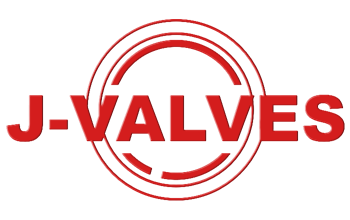
The Various Connection Methods of J-VALVES Ball Valves Meet Different Requirements

Introduction to J-VALVES Ball Valves
J-VALVES ball valves are designed to offer superior performance and reliability in fluid control applications. These valves are known for their robust construction, precision engineering, and ability to handle a variety of fluids under different operating conditions. Whether used in high-pressure oil and gas pipelines, chemical processing plants, or water treatment facilities, J-VALVES ball valves are engineered to provide long-lasting service with minimal maintenance.
Key Features of J-VALVES Ball Valves
Before delving into the connection options, it is essential to understand the key features that make J-VALVES ball valves stand out:
1. High-Quality Materials: Constructed from durable materials such as stainless steel, carbon steel, and advanced polymers, J-VALVES ball valves are designed to withstand harsh operating conditions, including high pressures, temperatures, and corrosive environments.
2. Precision Engineering: Each valve is meticulously engineered to ensure precise control and minimal wear. The ball and seat design ensures a tight seal, preventing leaks and ensuring reliable operation.
3. Fire-Safe Design: Many J-VALVES ball valves are designed to be fire-safe, meeting stringent industry standards such as API 607 and ISO 10497. This feature is critical in hazardous environments where fire resistance is a priority.
4. Low Maintenance: The robust construction and high-quality materials of J-VALVES ball valves mean they require minimal maintenance. This reduces downtime and operational costs, making them an economical choice for long-term use.
Connection Options for J-VALVES Ball Valves
One of the most significant advantages of J-VALVES ball valves is their versatility in connection options. These options allow the valves to be seamlessly integrated into various piping systems, ensuring compatibility and ease of installation.
1. Flanged Connections
Flanged connections are one of the most common methods used in industrial applications. J-VALVES ball valves offer flanged connections that comply with international standards such as ANSI, ASME, and DIN. These connections provide a secure and reliable method for attaching the valve to the pipeline, ensuring leak-free performance.
Advantages:
• High Pressure and Temperature Resistance: Flanged connections are designed to handle high pressures and temperatures, making them suitable for demanding applications.
• Ease of Installation and Maintenance: Flanged connections allow for easy installation and removal of the valve, facilitating maintenance and repair without the need to dismantle the entire pipeline.
2. Butt-Welded Connections
Butt-welded connections are another popular option for J-VALVES ball valves. This method involves welding the valve directly to the pipeline, creating a seamless and highly reliable connection. Butt-welded connections are ideal for applications where space is limited or where a high level of integrity is required.
Advantages:
• Enhanced Structural Integrity: The welded connection eliminates potential leak points, providing a highly reliable and durable solution.
• Space-Saving Design: Butt-welded connections require less space compared to flanged connections, making them suitable for compact piping systems.
3. Threaded Connections
Threaded connections are commonly used in smaller-diameter piping systems. J-VALVES ball valves offer threaded connections that comply with international standards such as NPT (National Pipe Thread) and BSP (British Standard Pipe). These connections are easy to install and provide a secure seal.
Advantages:
• Ease of Installation: Threaded connections are simple to install, requiring only basic tools and minimal expertise.
• Cost-Effective: Threaded connections are often more cost-effective compared to flanged or welded connections, making them a popular choice for smaller systems.
4. Socket-Welded Connections
Socket-welded connections are similar to butt-welded connections but involve inserting the valve into a socket on the pipeline and then welding it in place. This method provides a secure and reliable connection while allowing for some flexibility in alignment.
Advantages:
• Reliable Sealing: Socket-welded connections provide a strong and leak-free seal, ensuring reliable performance.
• Alignmentibility Flex: The socket design allows for some flexibility in alignment, making installation easier and reducing the risk of misalignment.













